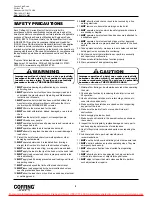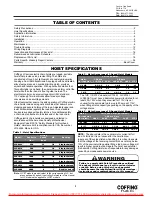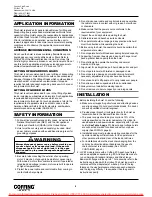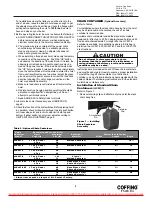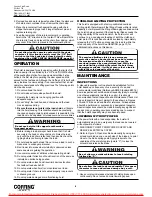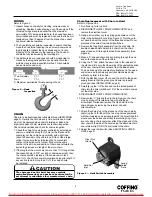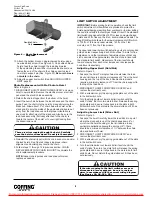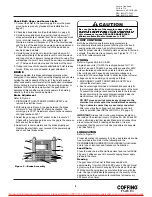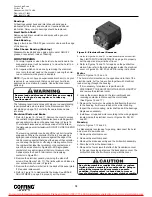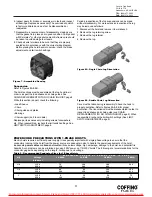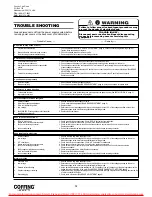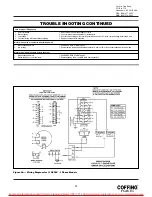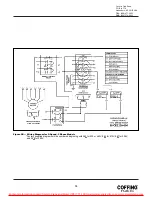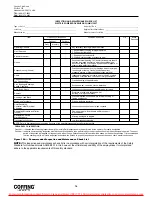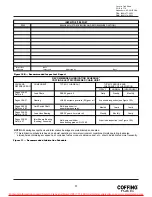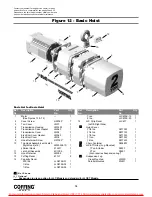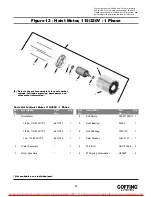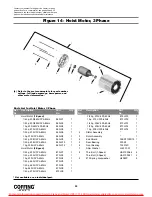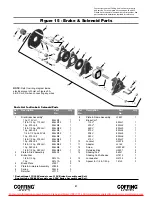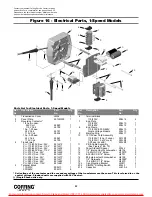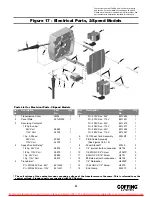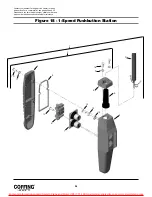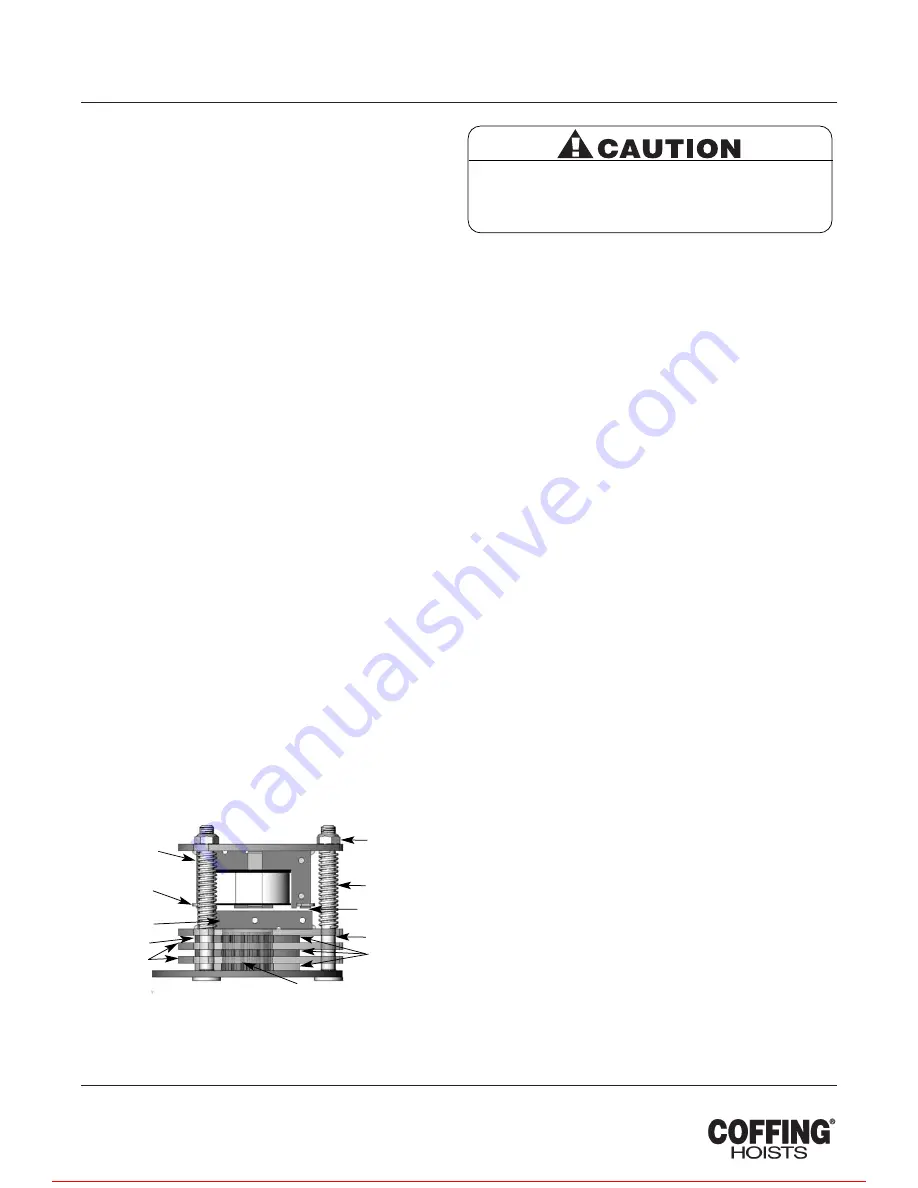
9
Country Club Road
P.O. Box 779
Wadesboro, NC 28170 USA
TEL: (800) 477-5003
FAX: (800) 374-6853
Check Both Upper and Lower Limits
1. Connect the hoist to the power supply. Be sure the green
ground wire is properly grounded (See Installation 3-b,
page 5).
2. Check load hook direction (See Installation 3-c, page 5).
3. Carefully raise load block to upper limit and observe if it
stops automatically at desired level. Do not allow load block
to run into hoist housing — this will damage the hoist.
Maintain a minimum clearance of 2" from the hoist housing
and the top of the load block on single-chained models and
1" from the chain support to the top of the load block on
double-chained models.
4. Carefully lower load block to lower limit and observe if it
stops automatically at the desired level. Do not allow slack-
end loop of chain to become taut against hoist housing. This
will damage the hoist. There should be a minimum clearance
of 1½" between the chain stop and the bottom of the hoist.
5. If upper and lower limits operate satisfactorily, hoist is ready
for use. If they are not as desired, repeat adjustment.
BRAKE
Properly adjusted, this brake will release promptly when
energized. It is capable of both smoothly stopping and securely
holding the rated capacity of the hoist. If the hoist develops
either undesirable over-travel after the pushbutton is released
(this condition is most noticeable in the lowering direction) or
hesitates to lift the load promptly when the pushbutton is
depressed (this condition is most noticeable in the hoisting
direction), the brake should be adjusted.
Brake Adjustment
Refer to Figure 5.
1. DISCONNECT HOIST FROM POWER SUPPLY and
remove the electrical cover.
2. With reference to Figure 5, the gap between the brake
armature “A” and the field “B” should be checked. The
correct gap is 0.015". Adjustment should not be necessary
until gap reaches 0.040".
3. Adjust the gap using a 9/16" socket on the 3 locknuts “F”.
Check with a feeler gauge to be sure the gap is the same on
both ends of the solenoid.
4. Adjustment is now complete and the brake properly set.
Replace the electrical cover, reconnect the power supply,
and check hoist brake action.
HOIST CONTROLS
Both the pushbutton and the reversing contactor are
mechanically interlocked to prevent shorting the circuit and
causing serious damage. As part of maintenance, always
check for proper closure of contact points as well as for burned
contacts. If replacement is necessary, see Figures 16, 17, 18,
and 19 for replacement parts.
WIRING
Refer to Figures 9A, 9B, 9C & 9D.
Single-phase units (115/230V) are shipped wired for 115V
and the 1-speed, 230/460V-3 phase units are wired for 460V
unless otherwise specified when ordered. Hoists wired for
other voltages and 2-speed units are single voltage only.
Conversion of dual-voltage hoists to either the higher or lower
voltage can be done simply and quickly as follows:
1. DISCONNECT HOIST FROM POWER SUPPLY and
remove the electrical cover.
2. Each dual-voltage hoist has a terminal block assembly for
the interconnection of the electrical components of the hoist.
To convert the voltage, reconnect the leads to the terminal
blocks according to the wiring diagram located inside the
electrical cover or Figures 9A, 9B, 9C and 9D.
DO NOT move any wires or make any changes to the
electrical circuit except at the terminal block assembly.
Tug on wires to ensure they are securely connected.
3. After converting the voltage, recheck phasing and limit
switch operation (See INSTALLATION 3-c & 5, page 5).
IMPORTANT: Always refer to the wiring diagram located on
the inside of the electrical cover or Figures 9A, 9B, 9C and 9D
when performing electrical repairs. Make sure all connections
are secure and check for damaged insulation. It is also
imperative that the power circuit has conductors of adequate
size (See Table 5).
LUBRICATION
Refer to Figure 11.
Proper lubrication is necessary for a long and relatively trouble-
free hoist operation. Refer to the following and the
RECOMMENDED LUBRICATION SCHEDULE for lubrication
points, type of lubricant, and frequency of lubrication.
Load Chain
Clean the load chain with acid-free solvent and coat with SAE
90 gear oil. Wipe excess oil to prevent dripping. Never apply
grease to the chain.
Gearing
The gear case of this hoist is filled at assembly with
approximately 1½ pints of SAE 90 EP gear oil. Check oil level
by removing the oil level check plug from the side of the hoist.
With the hoist hanging level, gear oil should be even with the
hole. Change oil periodically depending on the severity of the
application and the environmental conditions (at least every
200 hours of run time).
Figure 5 — Brake Assembly
Gap
F
G
X
B
E
A
X
D
H
C
Be sure the bottom of the armature does not bear
against the splined adapter “H”. As adjustments are
made, the built-in clearance will be reduced. When
this clearance is gone REPLACE BRAKE DISCS.
Minimum allowable disc thickness is .162".
For more information contact: Sievert Crane and Hoist, (708) 771-1600, parts@sievertelectric.com, www.sievertcrane.com


